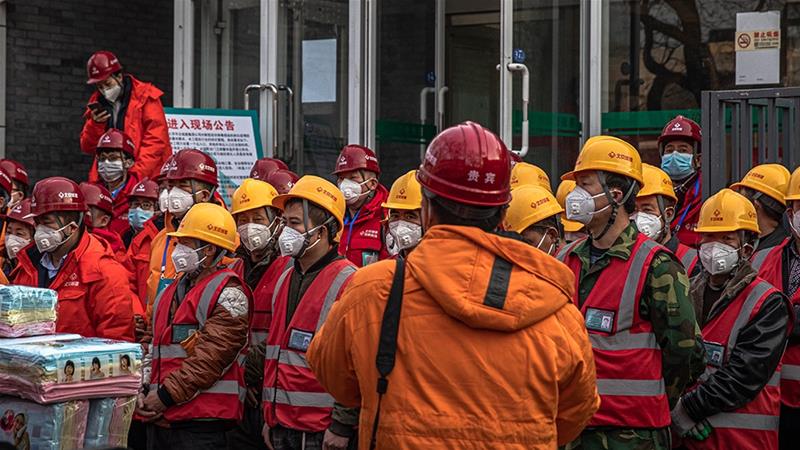
An advance team of international experts led by the World Health Organization (WHO) has left for Beijing to help investigate China’s coronavirus epidemic, which authorities said on Monday had now claimed 908 lives on the mainland.
The outbreak has caused huge disruptions in China with usually busy cities becoming virtual ghost towns over the past two weeks as Communist Party rulers ordered communities sealed off, cancelled flights, closed factories and shut schools.
WHO director-general Tedros Adhanom Ghebreyesus, who made a trip to Beijing for talks with President Xi Jinping and Chinese ministers in late January, returned with an agreement on sending an international mission.
But it has taken nearly two weeks to get the government’s green light on its composition, which was not announced, other than to say that WHO veteran Dr Bruce Aylward, a Canadian epidemiologist and emergencies expert, was heading it.
China under pressure as coronavirus toll exceeds SARS (3:22)
“I’ve just been at the airport seeing off members of an advance team for the @WHO-led #2019nCoV international expert mission to #China, led by Dr Bruce Aylward, veteran of past public health emergencies,” Tedros said in a tweet from Geneva on Sunday.
The WHO declared the outbreak a global emergency on January 30, days after the Chinese central government sealed off the province of Hubei and its capital Wuhan, the epicentre of a virus that emerged in December in a seafood market.
Dr Amesh Adalja, a senior scholar at Johns Hopkins Center for Health Security, said the team would be able to investigate not only how the virus spreads, but also the severity of the outbreak.
“There are a lot of unanswered questions and mysteries about how this outbreak is unfolding and the actions the Chinese government is taking,” he told Al Jazeera. “(The team) will help us risk stratify this for the rest of the world.”
The death toll from the outbreak in mainland China rose by 97, the largest in a single day so far, to 908 as of the end of Sunday, the National Health Commission (NHC) said on Monday.
‘Tip of the iceberg’

Over the weekend, an American hospitalised in the central city of Wuhan became the first confirmed non-Chinese victim of the disease. A Japanese man who also died there was another suspected casualty.
The coronavirus outbreak has now killed more people than the SARS epidemic did globally from 2002 to 2003.
Across mainland China, there were 3,062 new confirmed infections on Sunday, bringing the total number so far to 40,171.
Authorities had told businesses to add as many as 10 extra days onto holidays that had been due to finish at the end of January.
Even on Monday, a large number of workplaces were expected to remain closed with many white-collar workers working from home. Millions of others have been unable to return amid tightening restrictions on movement in some of China’s larger cities.
Al Jazeera’s Katrina Yu, who is in Beijing, said the government had released data showing a sharp drop in passenger numbers across trains, planes and buses since the outbreak began. Beijing’s metro was running at just 10 percent capacity, while airport traffic was down 63 percent and railway use was down 73 percent.
“The last few weeks have been eerily quiet in Beijing,” she said. “Today is nothing like a normal working day in Beijing.”
The virus has also spread to at least 27 countries and territories, according to a Reuters count based on official reports, infecting more than 330 people. Two deaths have been reported outside mainland China – both of Chinese nationals.
The latest patients include people who were infected even though they had no travel connection with mainland China.
Tedros described such cases as “concerning instances” and while stressing the need for calm urged all countries to be on the alert for the virus.
“The detection of a small number of cases may indicate more widespread transmission in other countries; in short, we may only be seeing the tip of the iceberg,” Tedros said in a series of tweets on Monday morning.
Source: AL JAZEERA

